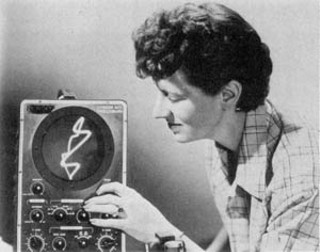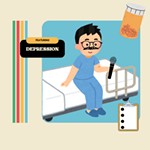Get Ready for the Abstronics of Mary Ellen Bute
A centennial celebration for the conductor of light
By Marrit Ingman, Fri., Sept. 15, 2006

To commemorate the centennial of her birth, Cinematexas will screen a retrospective of Texas-born experimental animator Mary Ellen Bute's 16mm short films, preserved and distributed by film historian Cecile Starr (co-author of Experimental Animation).
Bute's 14 short films marry musical compositions with abstract representations of form and light, using frame-by-frame animation "to create moods through the eye as music creates moods through the ear," as the intertitles to 1935's "Synchromy No. 2" explain. Bute called it "seeing sound," and she used a range of innovative tools – prismatic glass, moving light, focus effects, and, later in her career, the oscilloscope – to translate the mathematical patterns of music into modern art onscreen.
Bute, who died in 1983, began her career as a painter, studying with Emma Richardson Cherry while living outside Houston. Though she was inspired by cubism and other avant-garde approaches, Bute wanted to create images that moved in time and space.
"Painting was not flexible enough and too confined within its frame," wrote Bute in 1954's Films in Review. Looking for a "medium in which movement would be the primary design factor," she discovered film.
The resulting animations are singular: waves of images that move as if alive but are stubbornly abstract; they refuse to conform to a gestalt. Light bends and breaks across moving models made of ping-pong balls, sparklers, cellophane, and mirrors, choreographed in a "film-ballet."
Bute embraced the oscilloscope as a more high tech artist's tool in her last two films, "Abstronic" and "Mood Contrasts," and gushed, "By turning knobs and switches on a control board, I can 'draw' with a beam of light with as much freedom as with a brush."
Bute's first film, 1934's "Rhythm in Light," opens the program. Set to Grieg's Peer Gynt, this five-minute short combines hand drawings with frame-by-frame animation of three-dimensional models. Like many of Bute's films, "Rhythm in Light" appeared as a theatrical short before a first-run feature, preceding Becky Sharp during its premiere at Radio City Music Hall.
Other highlights include "Parabola," a nine-minute study in nature's perfect curve set to Darius Milhaud's Création du monde, and "Tarantella," a jittery interpretation of the folk dance with artwork by fellow animator pioneer Norman McLaren.
Thursday, Sept. 21, 10pm Carver Museum and Library
"Rhythm in Light" (1934)
"Synchromy No. 2" (1935)
"Dada" (1936)
"Parabola" (1937)
"Escape" (1937)
"Spook Sport" (1939)
"Tarantella" (1940)
"Polka Graph" (1947)
"Color Rhapsody" (1948)
"Imagination" (1948)
"New Sensations in Sound" (1949)
"Pastoral" (1950)
"Abstronic" (1952)
"Mood Contrasts" (1953)








